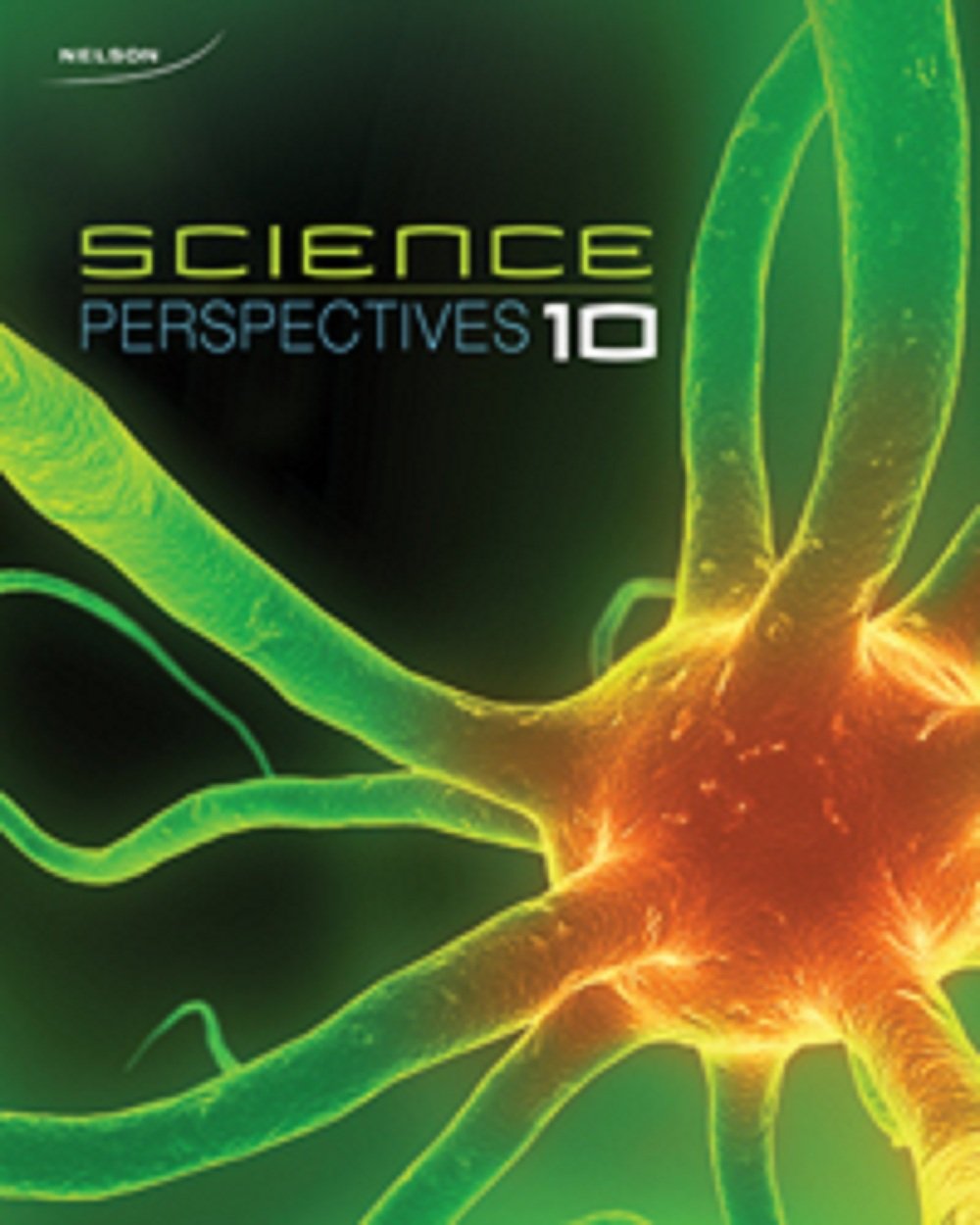Home Page
Textbooks
Nelson Science Perspectives 10
Section 9-5: Canadian Emission of Greenhouse Gases

Nelson Science Perspectives 10
1st Edition
Christy C. Hayhoe, Doug Hayhoe, Jeff Major, Maurice DiGiuseppe
ISBN: 9780176355289
Textbook solutions
Chapter 1: Living and Working with Science
Page 11: Try This
Page 13: Try This
Page 23: What Do You Already Know?
Chapter 2: Cells, Cell Division, and Cell Specialization
Section 2-1: Plant and Animal Cells
Section 2-3: The Importance of Cell Division
Section 2-5: The Cell Cycle
Section 2-7: Cell Division Going Wrong: Cancer
Section 2-9: Specialized Cells
Page 64: Review
Page 66: Self-Quiz
Chapter 3: Animal Systems
Section 3-1: The Hierarchy of Structure in Animals
Section 3-2: Stem Cells and Cellular Differentiation
Section 3-4: The Circulatory System
Section 3-6: The Respiratory System
Section 3-7: Organ Transplantation
Section 3-8: The Musculoskeletal System
Section 3-10: The Nervous System
Section 3-11: Interactions of Systems
Page 116: Review
Page 118: Self-Quiz
Chapter 4: Plant Systems
Section 4-1: Systems in Plants
Section 4-2: Plant Tissue Systems
Section 4-4: Tissues Working Together
Section 4-6: Plant Growth
Page 150: Review
Page 152: Self-Quiz
Page 159: Unit Review
Page 164: Self-Quiz
Chapter 5: Chemicals and Their Properties
Section 5-1: Properties and Changes
Section 5-3: Hazardous Products and Workplace Safety
Section 5-4: Patterns and the Periodic Table
Section 5-5: Atoms and Ions
Section 5-6: Ionic Compounds
Section 5-7: Names and Formulas of Ionic Compounds
Section 5-9: Polyatomic Ions
Section 5-10: Molecules and Covalent Bonding
Page 216: Review
Page 218: Self-Quiz
Page 191: Try This
Page 191: Check Your Understanding
Chapter 6: Chemicals and Their Reactions
Section 6-1: Describing Chemical Reactions
Section 6-3: Conserving Mass in Chemical Reactions
Section 6-4: Information in Chemical Equations
Section 6-5: Types of Chemical Reactions: Synthesis and Decomposition
Section 6-6: Types of Chemical Reactions: Single and Double Displacement
Section 6-9: Types of Chemical Reactions: Combustion
Section 6-10: Corrosion
Page 258: Review
Page 260: Self-Quiz
Page 232: Try This
Page 232: Check Your Understanding
Chapter 7: Acids and Bases
Section 7-2: Properties, Names, and Formulas
Section 7-3: The pH Scale
Section 7-5: Neutralization Reactions
Section 7-7: Explore an Issue Critically
Page 294: Review
Page 296: Self-Quiz
Page 303: Unit Review
Page 309: Self-Quiz
Page 280: Try This
Page 281: Check Your Understanding
Chapter 8: Earth’s Climate System and Natural Change
Section 8-1: Weather and Climate
Section 8-2: Classifying Climate
Section 8-3: The Sun Powers Earth’s Climate System
Section 8-4: Components of Earth’s Climate System
Section 8-6: The Greenhouse Effect
Section 8-8: Energy Transfer within the Climate System: Air and Ocean Circulation
Section 8-9: Long-Term and Short-Term Changes
Section 8-10: Feedback Loops and Climate
Section 8-11: Studying Clues to Past Climates
Page 364: Review
Page 367: Self-Quiz
Chapter 9: Earth’s Climate: Out of Balance
Section 9-1: Evidence of a Changing Climate
Section 9-4: Greenhouse Gases: Changing the Climate
Section 9-5: Canadian Emission of Greenhouse Gases
Section 9-6: Computer Modelling: Evidence that Human Activity is Causing Current Changes
Page 398: Review
Page 400: Self-Quiz
Page 375: Try This
Page 378: Check Your Understanding
Chapter 10: Assessing and Responding to Climate Change
Section 10-1: Climate Models and Clean Energy
Section 10-2: Global Impacts of Climate Change
Section 10-3: Impacts of Climate Change on Ontario
Section 10-4: Taking Action to Limit Climate Change
Section 10-5: What Can Individuals Do?
Page 438: Review
Page 440: Self-Quiz
Page 446: Unit Review
Page 453: Self-Quiz
Chapter 11: The Production and Reflection of Light
Section 11-1: What is Light?
Section 11-2: How is Light Produced?
Section 11-3: The Laser?A Special Type of Light
Section 11-4: The Ray Model of Light
Section 11-6: The Laws of Reflection
Section 11-7: Images in Plane Mirrors
Section 11-9: Images in Curved Mirrors
Page 506: Review
Page 509: Self-Quiz
Page 486: Check Your Understanding
Page 486: Try This
Chapter 12: The Refraction of Light
Section 12-1: What is Refraction?
Section 12-4: The Index of Refraction
Section 12-5: Total Internal Reflection
Section 12-7: Phenomena Related to Refraction
Page 542: Review
Page 545: Self-Quiz
Chapter 13: Lenses and Optical Devices
Section 13-1: Writing a Critical Analysis
Section 13-3: Images in Lenses
Section 13-4: The Lens Equations
Section 13-5: Lens Applications
Section 13-6: The Human Eye
Page 582: Review
Page 584: Self-Quiz
Page 590: Unit Review
Page 596: Self-Quiz
All Solutions
Section 9-5: Canadian Emission of Greenhouse Gases
Exercise 1
Step 1
1 of 3
a) Car emissions, industrial processes, landfills, cow/animal farms, burning coal and natural gas to produce electricity, and deforestation.
Step 2
2 of 3
It should be a priority to reduce car emissions, lower industrial emissions, and stop deforestation because these are the easiest changes that have major impacts on reducing emissions
Result
3 of 3
a) Car emissions, industrial processes, landfills, cow/animal farms, burning coal and natural gas to produce electricity, and deforestation.
Exercise 2
Step 1
1 of 3
a) methane and nitrous oxide
Step 2
2 of 3
b) methane comes from cows and landfills, nitrous oxide comes from industrial waste.
Result
3 of 3
a) methane and nitrous oxide
Exercise 3
Step 1
1 of 3
a) it will increase the input since their will be less carbon sinks as the forests lose their ability to use carbon when attacked by fires or insects.
Step 2
2 of 3
b) it will further increase the contribution since burning anything releases carbon dioxide into the atmosphere
Result
3 of 3
a) it will increase the input since their will be less carbon sinks as the forests lose their ability to use carbon when attacked by fires or insects.
Exercise 4
Result
1 of 1
Growth of new trees creates carbon sinks. Insect infestations kill trees and release carbon dioxide similarly to wildfires
Exercise 5
Result
1 of 1
Carbon sinks reduce greenhouse gas emission, lowering temperatures or preventing them from further increasing
Haven't found what you were looking for?
Search for samples, answers to your questions and flashcards

unlock
